Ultimate Hall of Fame Class of 2016 Announced
Posted: December 13, 2016 05:19 PM
Twelve New Members Welcomed into Ultimate Hall of Fame in 2016 Class
Colorado Springs, Colo. (Dec. 13, 2016) – The Ultimate Hall of Fame welcomed 12 new members today as USA Ultimate, the national governing body for the sport of ultimate in the United States, announced the Class of 2016.
The Class of 2016 includes open division inductees Stu Downs, Paul Greff, Pat "Bagger" Lee, Andrew Lugsdin and Randy Ricks; women’s division inductees Nicole "Sprout" Beck, Cat Pittack, Christine "Wags" Wagner, Jackie Watson Pierce and Amy Wilbur; and contributors Tiina Booth and Cindy Fisher.
"Each year we are very excited and proud to announce the newest inductees into the Ultimate Hall of Fame," said Dr. Tom Crawford, USA Ultimate Chief Executive Officer. "This year is no different as the collective contributions and phenomenal accomplishments of these inductees is truly inspiring. We are proud and honored to recognize these new members of the Hall of Fame."
The 2016 inductees were selected by the current USA Ultimate Hall of Fame voting members from a final slate of 20 candidates announced in early November with the additional consideration of two contributor candidates included on the final ballot. The candidates included in the Call to the Community were chosen by the Hall of Fame Vetting Subcommittee from an accomplished pool of athletes and contributors through a review of peer voting results and written applications solicited by the committee.
To be inducted into the Ultimate Hall of Fame, potential candidates must complete three steps. The first stage involves "peer voting," where potential candidates are reviewed and ranked by a group of players or contributors from their own playing era. During the current "catch-up" phase, the second stage involves winnowing the field down to a slate of 20 candidates through a review of the peer voting results and written applications solicited by the six-person Vetting Subcommittee. The slate of 20 is announced in the Call to the Community which requests input from the candidates' peers. The final stage involves two rounds of voting for up to 10 inductees and two contributors by the full voting committee, comprised of the Vetting Subcommittee and the player and contributor members of the Ultimate Hall of Fame. An inductee must receive an affirmative vote of at least two-thirds of the voters to be selected.
There were a number of improvements incorporated in the 2016 Hall of Fame process to enable a catch-up period in advance of the 50th anniversary of ultimate and the next formal Hall of Fame Induction ceremony to be held in 2018. A working group was established to spearhead the improvement efforts, including refreshing and enriching the peer pools to include new elite-level competitors as well as those who have deep knowledge of the Hall of Fame prospects, establishing eligibility guidelines or "peak-playing" timeframes for the 2016-2018 Hall of Fame process, and expanding the number of potential inductees from five to 10 for the next three years.
"I am so proud of how the process improvement efforts resulted in an unprecedented number of new Hall of Fame members," said Hall of Fame Committee Chair Suzanne Fields. "We had an excellent class of nominees this year, all worthy of consideration. We are so pleased to welcome these 12 new members into the Ultimate Hall of Fame."
The Class of 2016 is the 13th class inducted into the Ultimate Hall of Fame, which was established in 2004 to honor the men and women whose accomplishments as athletes and contributors merit acknowledgement by their peers. The Ultimate Hall of Fame currently exists as a virtual hall, with a long-term goal to establish a permanent site by 2018 – the 50th anniversary of the sport’s founding.
Hall of Fame Class of 2016
Player Inductees
| Nicole "Sprout" Beck (Santa Cruz, Calif.) |
| |
|
|
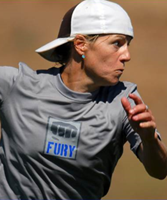 |
|
Nicole "Sprout" Beck was a soccer star turned ultimate player sensation! She was focused, competitive, intelligent and a flawless athlete. As a young player being nurtured on the Maineiacs, she blossomed into a dynamic, all-around handler and cutter who pushed those around her to be better. Time and time again, Sprout would simply dominate. Her speed and vision on the field were a lethal combination; her skills spanned all areas of the game. Nicole brought women’s ultimate to another level of competition and athleticism, which garnered wide support from her peers, both women and men.
After earning national titles with the Maineiacs and Felix, Sprout was one of the founding members of the San Francisco-area team Fury, and contributed to the growth of a dynasty with five national and one world title over the 12 years she was with the team. Nicole was instrumental on and off the field; she recruited players, held teaching sessions and helped develop innovative strategies that led Fury to their many successes. At the end of her competitive time with Fury, she became the only player to have her number retired. Sprout’s combination of athleticism, a strategic mind, her love of team and her dedication to our sport is the gold standard for ultimate.
|
| |
|
|
| Stu Downs (Decatur, Ga.) |
| |
|
|
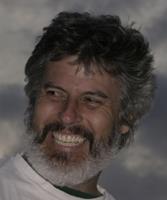 |
|
As the cornerstone of Atlanta’s Chain Lightning, Stu Downs was the face of southeast ultimate from the late ‘80s through the late ‘90s. Big, lightning quick, with solid hands and an arsenal of creative throws, Stu could play any position on offense or defense. With a mind as nimble as his reflexes, Stu locked down the middle of zone defenses with strategic baiting and huge layouts. He was, arguably, the best middle-middle of his era.
After achieving initial success on Boston club teams in the mid ‘80s, Stu came to Atlanta, where he fortified Chain Lightning and led them to 10 appearances at Nationals. In addition to his high level of play, Stu was widely acknowledged as the embodiment of Spirit of the Game. His iconic sportsmanship is legendary. Stu influenced and inspired thousands of ultimate players of all ages throughout his long career; his impact continues today as a global ambassador, coaching for Ultimate Peace each summer in the Middle East. Stu always showed the utmost respect for his opponents and, in turn, earned a reputation as one of the most exemplary players to ever take the ultimate field.
|
| |
|
|
| Paul Greff (Columbus, Ohio) |
| |
|
|
 |
|
In the first half of his open career, during the 1980s, Paul excelled in relative obscurity on his Detroit-based teams, Coffee & Donuts and Night Train. Each year, their hopes for a Nationals bid from the Central Region were dashed by perennial title contenders the St. Louis Tunas and Chicago's Windy City. However, in the early ‘90s, Night Train finally broke through, allowing Paul to showcase his talents to a wider audience at Nationals. Whether throwing clutch goals as an unstoppable offensive force or making layout blocks while minimizing opponents’ top players, his dominant play left opponents asking "Who is that guy?"
In 1996, Paul took his talents to Boston DoG, joining a formidable team at the outset of their extensive championship run. Arriving in his mid-30s with no prior championships, Paul might not have been impressive on paper, but he quickly became the difference for DoG. He cemented his place as the X-factor quickly, propelling them to four more consecutive national titles with his exceedingly reliable crunch-time performances. Paul was one of those rare athletes who, while approaching 40, continued to dominate his sport and lead the best team in the country to championships season after season. A two-way player throughout his career, Paul almost certainly had more touches on DoG during his four-year run than any other player. Paul excelled without flash; he just delivered with humility and steely determination. At his peak, Paul earned the moniker "TGPITG" (The Greatest Player in the Game). It was difficult to dispute.
|
| |
|
|
| Pat "Bagger" Lee (Austin, Texas) |
| |
|
|
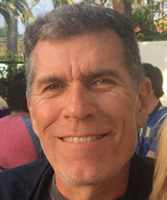 |
|
For more than a decade, from the mid-1980s through mid-1990s, Pat "Bagger" Lee was regarded as one of the game’s biggest playmakers. Offensively, he was always a deep threat with his superior speed, quick change of direction and big sky ability. On defense, he could shut down the opposing team’s top offensive stud with his ridiculous closing speed. Combined with his field awareness, he was regarded as one of the best to ever play the position of zone deep deep.
Bagger’s legacy in Texas ultimate is far-reaching and unprecedented. Beginning at the University of Texas, Bagger led his team to numerous appearances at College Nationals, including consecutive semifinals. Bagger’s level of play raised the expectations of what was possible throughout the entire Austin ultimate community. Leading his Austin-based teams to four consecutive appearances at Club Nationals in the late ‘80s was no small feat. It put Austin on the Club Nationals map and laid the foundation of success for future Austin club teams. Bagger rounded out his open career playing with Chicago Windy City and San Diego Nice Guys. Always level-headed, Bagger earned the respect of the greatest players of his era with his spectacular play on the field.
|
| |
|
|
| Andrew Lugsdin (Vancouver, B.C.) |
| |
|
|
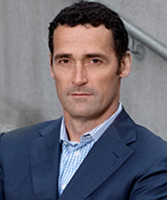 |
|
Andrew has the distinction of being the first Canadian player to be inducted into the Ultimate Hall of Fame. Andrew was part of a core group of players and leaders that built Furious George (and Team Canada) into two of the most dominant forces in the sport for over a decade. During this time, Andrew’s teams captured three UPA/USA Ultimate Nationals titles (2002, 2003, 2005) and three WFDF World Ultimate Championships titles (1998, 2004, 2008). From the late ‘90s through the 2005, Andrew was widely regarded as one of the best all-around players in the game. He made an immediate impression as one of the most complete and unstoppable offensive cutters to ever play the position. Despite regularly drawing the other team’s toughest lane defender, Andrew was always able to get open at will.
Andrew’s overall game had no weaknesses, and that is what separated him; he could do everything. With his powerful 6’5" frame, he would handle, take defenders long, cut underneath and catch the goal, often doing all on the same point. Andrew was also an elite defender who would switch lines when needed. Anyone who watched Furious George knew who led the team; Andrew stood out as an elite leader. As the main captain for Furious George during most of his tenure, Andrew proved to be an exceptional strategist and tactician. He was a key contributor to conceiving Furious George’s innovative offense and excelled at making in-game adjustments. He was also an exceptional motivator, capable of willing his teammates to play their best when nothing less would do. It’s hard to imagine Vancouver ultimate evolving the way it did without Andrew’s spectacular play, motivational leadership and constant drive for excellence.
|
| |
|
|
| Cat Pittack (Woodinville, Wash.) |
| |
|
|
 |
|
Cat was regarded as one of the top female defensive players of the northwest region. Her outstanding power, speed and competitive focus was unrivaled. She was known for fabulous layouts, skies, speed, being an unstoppable a deep-threat receiver and her lefty throws (while playing with a broken wrist). As a former captain from Massachusetts Zulu and rookie defensive stopper for the Boston-area Smithereens, she took what she learned and patiently, deliberately prepared the little-known Seattle women, Women on the Verge (WOTV), to become a national powerhouse. In addition to 12 appearances at Nationals and an impressive record of four world championship titles, Cat helped propel the women’s ultimate program in Seattle from almost non-existent to the most competitive in the world. Her leadership, rigorous hill and track workouts, and demand of attendance at all practices is what changed the culture of women’s ultimate in Seattle from merely a fun pastime to the development of an elite team competing at the highest levels of the sport.
After her dominance throughout 10 years of captaining WOTV, Cat continued leading the way as a force on Seattle’s new elite team, Riot, resulting in their first national championship title in 2004, when, at age 40 and with two young children in tow, she continued playing chase and getting game-changing diving blocks. She is recognized for raising the bar for the level of athleticism in women's ultimate and for being a leader who helped put northwest women’s ultimate on the map.
|
| |
|
|
| Randy Ricks (Lakewood, Colo.) |
| |
|
|
 |
|
Randy was a co-founder and key player on the St. Louis Tunas, one of the most prominent open teams of the ‘80s. Building on his previous athletic success as a star high school and college basketball player, Randy quickly developed a reputation as one of the game’s most feared receivers. He presented a serious match-up problem for all opposing teams; he was simply too fast, too agile, and with the disc in the air, he jumped much too high. Randy’s downfield cutting was one of the primary reasons the Tunas, with their lightning quick set of handlers, played such a forceful, explosive and wide-open game. Despite being slightly under 6’2", he played much bigger, dominating much taller players in the air due to his three-foot vertical leap.
In the finals at Nationals in 1984, Randy was the game changer, leading St. Louis to victory as he snagged seven goals. Subsequent to his early years as a premiere downfield target, he developed into a balanced and versatile threat at every position. By the time he left the open division, Randy had a full arsenal of deadly throws, which he was capable of delivering with tremendous accuracy and touch. He applied his offensive skills successfully for many more years, winning numerous championships in the masters and grand masters divisions. Randy has always been a role model for Spirit of the Game, exemplified by his fun-loving nature, joy of the game and respect for his opponents.
|
| |
|
|
| Christine "Wags" Wagner (Encinitas, Calif.) |
| |
|
|
 |
|
Christine "Wags" Wagner started her illustrious ultimate career as a fresh, young player for California-San Diego and went on to play for Safari. She was totally committed to learn, play and absorb everything, especially the incorporation of SOTG into her game. With her height and amazing hands, she was an incredible target in the end zone who would bring down everything. A solid player on both offense and defense, she quickly grew into a starter and fierce defender for many years. A lefty on offense who also effectively used her wing span in the cup of a zone defense, she was clearly a force to be reckoned with. Wags’ peak came when she played with the Maineiacs. She exhibited defensive strength, a strategic mentality and true grit as she contributed to three national and three world championship titles with her team.
Wags was recognized amongst her peers as a strong athlete and sprinter and an extremely effective and crafty defender. She was also a very dangerous deep threat; it was not unusual to see two players covering her when she got close to the end zone. Wags exemplified integrity and dedication to upholding Spirit of the Game. Wags’ beaming smile showed her kindness and ability to connect with so many different players while her fiery drive showed in her dedication to excellence in playing at the highest level of competition.
|
| |
|
|
| Jackie Watson Pierce (Cape Elizabeth, Maine) |
| |
|
|
 |
|
Jackie won seven national championships with five different teams and a world title during her incredible career in the west region; she was a leader and key component of every team she played on. Her offensive prowess was clearly on display with her history-making fierce upwind hammer to the back corner of the end zone to propel California-Santa Barbara’s Burning Skirts to their first national championship! From there, she moved to the Bay Area and helped lead the Maineiacs to their first national title in 1990. Jackie clearly played an important role in the Maineiacs’ string of victories, and her style left an imprint on how the women’s game developed.
Jackie’s cerebral approach to the game, coupled with her natural instincts and physical ability, made her a player like no other from her era. Her ability to pick apart opponents’ games (both individuals and teams) was key to her versatility as a player and teammate. Jackie was a steady and potent offensive player who was difficult to cover; she exuded confidence and imparted this to her team. Her play was versatile and dynamic, and she was and continues to be a great champion of Spirit of the Game. Jackie continues to promote and teach ultimate for children in Cape Elizabeth, Maine, as a way of giving back to a sport that has given her so much.
|
| |
|
|
| Amy Wilbur (Bedford, N.Y.) |
|
| |
|
|
 |
|
With the nickname, "The General," Amy was a mainstay of women’s ultimate in New York City for almost a decade. Although New York women’s ultimate was a perennial underdog to Boston and the like, Amy led her team with as much intensity, focus and compassion as any player on any team. Amy raised the bar for all who played with and against her with her athleticism, leave-it-on-the-field attitude and passion for the game. Amy won two national titles with Godiva as a starter on both offense and defense. A key member of the 1990 World Champion Lady Condors, she was named tournament MVP after a narrow victory in the finals.
Amy was a mentor and an example for the many women who played in New York during the ‘80s and early ‘90s. She inspired an often-struggling team to perform beyond their collective talents by playing both ways – covering and shutting down the opposition’s strongest player on defense and dominating downfield on offense. A relentless defender, a sure-handed receiver and a surprising success in the air, Amy was a nightmare for her competitors. Despite her single-minded intensity and competitive spirit, Amy was always considered a fair player, sharing mutual respect and amity with her competitors.
|
Contributor Inductees
| Tiina Booth (Amherst, Mass.) |
| |
|
|
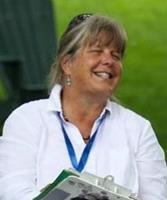 |
|
Tiina Booth is noted for her contributions to creating and implementing the template for the development and support of youth ultimate. From the Amherst Invitational to school clinics to the National Ultimate Training Camp (NUTC), Tiina built the foundation of youth ultimate in the Northeast that has been replicated throughout the U.S.A.
After helping to found the women’s division and serving as a women's regional coordinator in the Northeast in early 1980s, Tiina became the coach of the Amherst Regional High School (ARHS) ultimate team beginning in 1989. She co-founded the Junior National Championships in 1998 and coached her ARHS boys' team to national championships in 1998, 2003 and 2004. In 2001, she founded NUTC, the first overnight high school ultimate camp. Over the years, the NUTC experience trained the next generation of ultimate stars and attracted players from across the U.S. and internationally, with many NUTC alumni returning as NUTC coaches. She was a coach of the U.S. Boys’ National Ultimate team in 1998, 2000 and 2004; these teams won the World Championship in 1998 and 2004. She co-wrote the original curriculum for the UPA/USA Ultimate coaching certification in 2003-04, co-authored the book, "Essential Ultimate" in 2006, and has been a writer for the online publication Ultiworld since 2013. Tiina founded the Ultimate Players and Coaches Conference in 2007, which brought together giants in the sport for the promotion, teaching and growth of ultimate for several years. After retiring from coaching the ARHS boys in 2013, she became a coach for the University of Massachusetts men’s ultimate team in 2014, helping to bring them to Nationals in 2014 (their first time in 26 years), a position she continues to hold today.
|
| |
|
|
| Cindy Fisher (Austin, Texas) |
| |
|
|
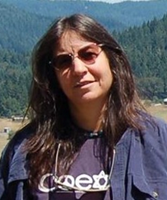 |
|
Cindy Fisher played a seminal role during a time of transition for the Ultimate Players Association (UPA) by building and sustaining the foundation upon which the UPA would become a true national governing body of the sport of ultimate. During a time when the player community was not wholly supportive of the organization, she maintained the championship series at the club and college levels, published newsletters to communicate in the pre-website era and supported the volunteer base and player community, all essential and unheralded tasks that allowed ultimate to continue its growth and development.
As a player, Cindy helped organize the women’s team at Gainesville in 1981 and was a core member of the group that revitalized the Washington Area Frisbee Club after moving there in 1987 as a member of Satori, also serving as an organizer of the 1989 Nationals tournament in D.C. She became the UPA Newsletter Editor and Designer in 1991 and assumed the Managing Director role later that year, moving to Houston where the UPA was being run out of the executive director’s company office. In 1992, when the executive director resigned, Cindy oversaw the relocation of the office to Colorado. Over the next four years, despite a lack of executive leadership at the board level, Cindy developed a long-term strategic plan for the board that transitioned the UPA to a new corporate structure that incorporated greater organizational effectiveness and continuity with less reliance on volunteers. And she accomplished these transitions while singlehandedly managing all the day-to-day tasks of the business side of ultimate. After stepping down as Managing Director in 1996, Cindy then served as National Women’s Director from 1998 to 2002.
|
The Vetting Sub-Committee included:
- Suzanne Fields (Chair, Hall of Fame Committee) - Hall of Fame Inaugural Class of 2004
- David Barkan (Open Peer Co-Lead) - Hall of Fame Class of 2010
- Gloria Lust-Phillips (Women's Division Chair) - Hall of Fame Class of 2008
- Robert "Nob" Rauch (Contributor Peer Chair) - Hall of Fame Class of 2006
- Brian Murphy (Ad-hoc subcommittee member) - Hall of Fame Class of 2007
- Keay Nakae (Open Peer Co-Lead/Ad-hoc subcommittee member) - Hall of Fame Class of 2012
- Henry Thorne (USA Ultimate Board Liaison)

Have any questions or comments? We welcome community feedback and discussion made in a respectful manner. Please refrain from profanity or personal attacks, as such public comments negatively reflect on our sport and community.